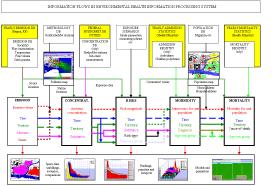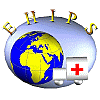 |
On this background, EHIPS builds up its functions described above. They are performed by the functional blocks that work with all data modules on equal footing. There is the data overview block that performs tabulating, charting, mapping; the statistical block that performs correlation, regression, cluster and pattern analyses and so on.
Finally, EHIPS includes the service modules that perform links to databases, form the output document, support the network data exchange etc.
The backbone structure of EHIPS in minimal configuration is shown in Figure. |

